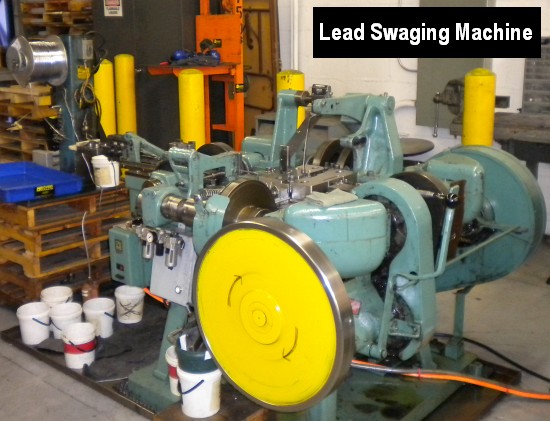Berger Bullets Factory Tour — Kelly Bachand Reports
 While in Southern California recently I couldn’t pass up the invitation to spend some time with my friend Michelle Gallagher, the Marketing Coordinator for Berger Bullets. After my obligatory visit to Disneyland, Michelle offered me a tour of the Berger Bullets factory. That is something even a Sierra guy knows not to pass up!
While in Southern California recently I couldn’t pass up the invitation to spend some time with my friend Michelle Gallagher, the Marketing Coordinator for Berger Bullets. After my obligatory visit to Disneyland, Michelle offered me a tour of the Berger Bullets factory. That is something even a Sierra guy knows not to pass up!
The machines now run 24 hours a day to keep up with market demands. To increase production, Berger recently started a third shift, allowing the machines to run at maximum capacity. We walked into the factory to the sound of a machine pressing out bullet jackets: “ca-chung, ca-chung, ca-chung.” It is so loud that hearing protection is worn by the operator. Copper is fed into the jacket-making machine from a large coil. Then a series of sequentially deeper, narrower punches create one complete bullet jacket for every revolution of the machine’s huge crankshaft. The operator monitors the whole cycle, selecting jackets at random to test for dimensional accuracy.
After the jackets are formed, lead is placed into the jackets. As with the copper jacket material, the lead is fed into a large machine from a coil. Lead cores are then cut to length and given an approximate shape, a process called swaging. This particular core-forming machine has been in use since before WWII! Michelle said “these machines still work great so there is no reason to switch to anything else”.

Next the copper jackets and lead cores are combined and shaped using a successive series of precision dies. The bullets are swaged (squished really) from the bottom up once the lead is inserted into the jacket via a tube feeder. This ensures there are no air bubbles between the lead core and copper jacket. I watched as one such machine was set up and calibrated. It was started then tested and adjusted a number of times before it was left to run automatically. Even then, handfuls of bullets are frequently tested for weight, concentricity, and dimensional accuracy. I was told that if any lot is found to be bad — for whatever reason — the entire lot is just thrown away! Sorry, but this means no boxes of seconds or “blems” at bargain prices from the Berger factory.
Some details of Berger’s operation surprised me. A number of tasks that I assumed would be automated are still done by hand, ensuring both accuracy and consistency. Bullets are weighed, packaged, and checked by hand. I overheard one employee say that they had a few thousand bullets to weight-sort before they could be packaged because they feared something may have been slightly off during production. That was a time-consuming task, but they did weight-sort bullet by bullet to make sure nothing had gone wrong.
 New Product Packaging
New Product Packaging
Berger is now offering “quantity packaging” for the most popular bullets in a number of different calibers. I was also surprised to see boxes in colors other than yellow on Berger’s shelves. Michelle explained to me that the yellow boxes are retained for match or target bullets. The thinner-jacketed hunting bullets now go in orange boxes while moly-coated bullets are packed in black boxes.
One last point worth noting is that if, like me, you (foolishly) wear a Sierra shirt to a tour of Berger Bullets, you will promptly be given a Berger shirt and hat to wear during the visit.
Michelle, thanks so much for the tour! — Kelly Bachand
Similar Posts:
- How Bullets are Made — Inside Look at the Barnes Factory
- Berger Introduces NEW 87gr 6mm VLD for 1:10″ Twist Barrels
- Sierra Secrets — How MatchKings Are Made
- Video Shows Hornady Ammo and Bullet Production Processes
- Rise of the Machines — Berger Doubles Bullet-Making Capacity
Share the post "Berger Bullets Factory Tour — Kelly Bachand Reports"
Tags: Berger, bullets, California, Swaging


















As bullets go, I like Berger Bullets a great deal and believe they are some of the best on the market (i.e. I shoot them a great deal of the time). Lately it seems like just about all the bigger 6mm target bullets are never available and no one has them in stock (i.e. Berger 6mm 100’s, 105’s, 108s, 115s). I hope they can get this issue resolved soon because when you get low or run out, it forces you to look to having to buy and shoot alternative makers projectiles and I hate to see Berger lose the business.
Robert Whitley